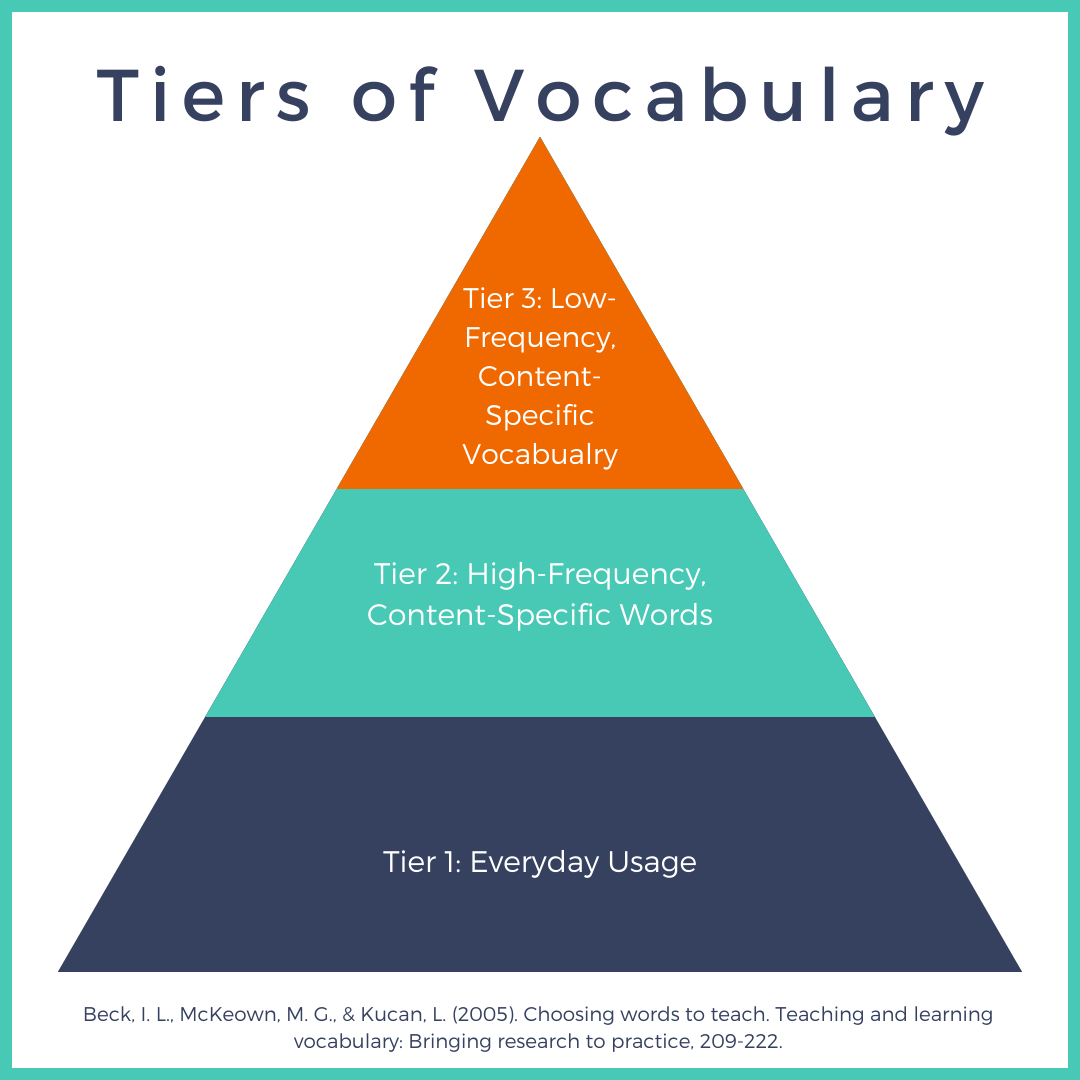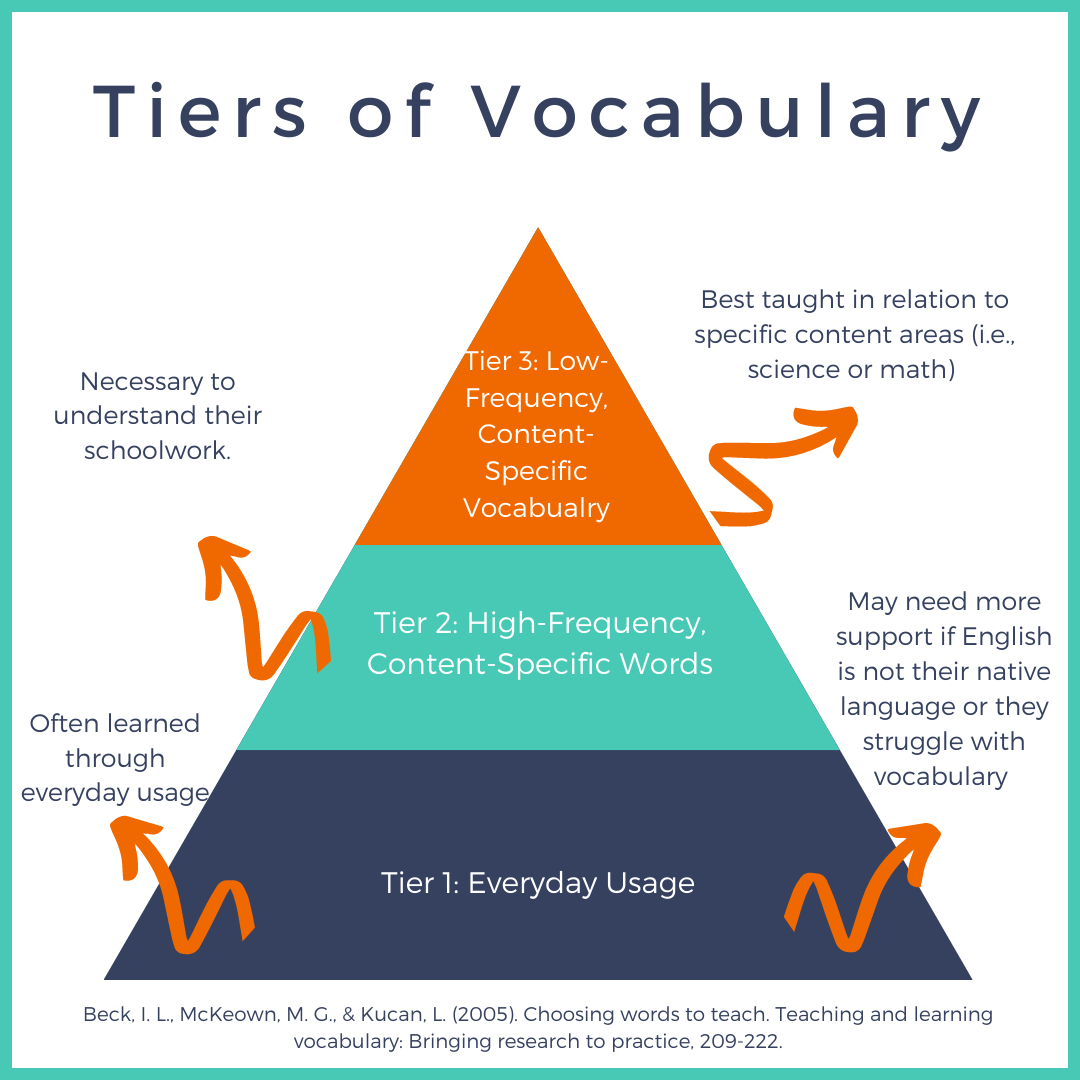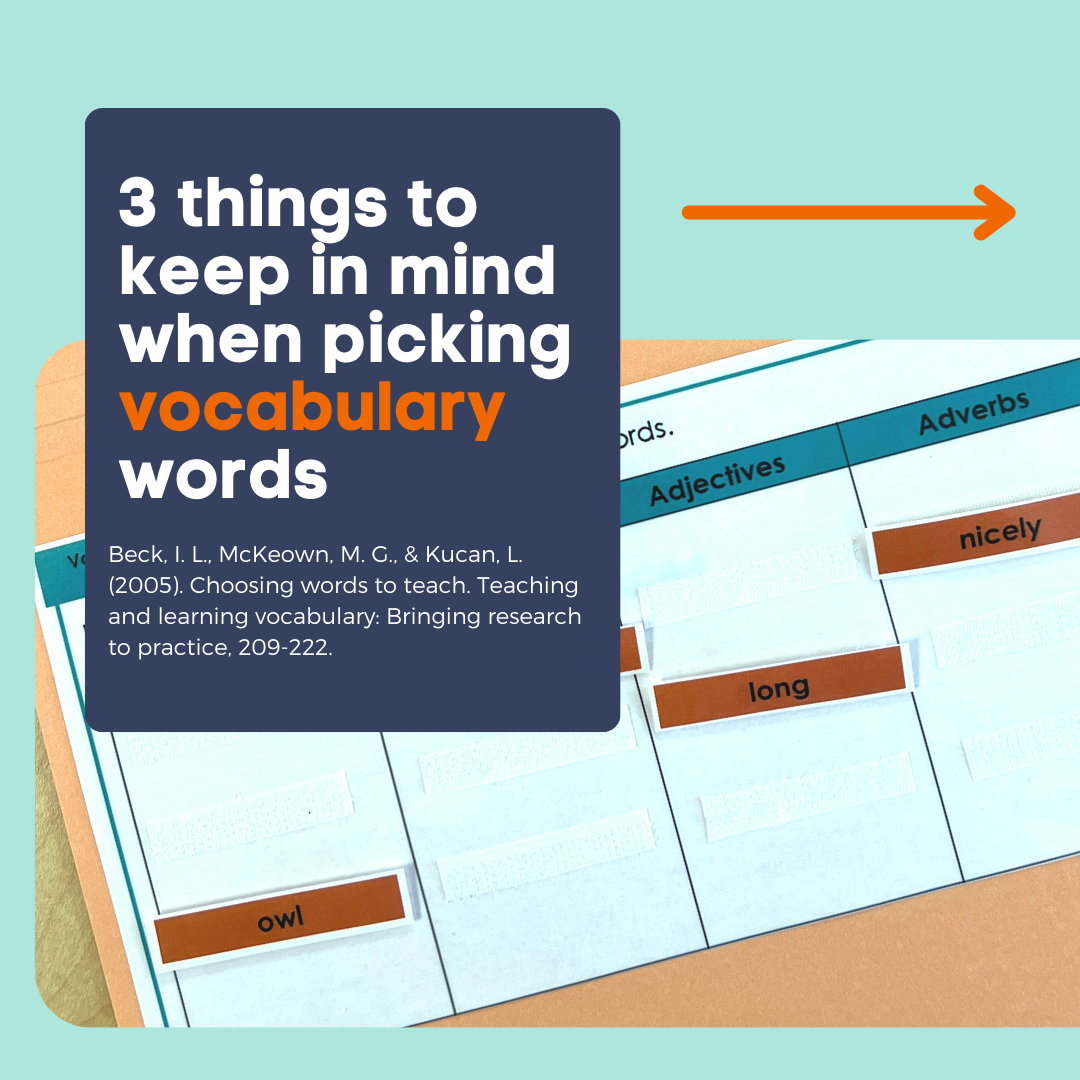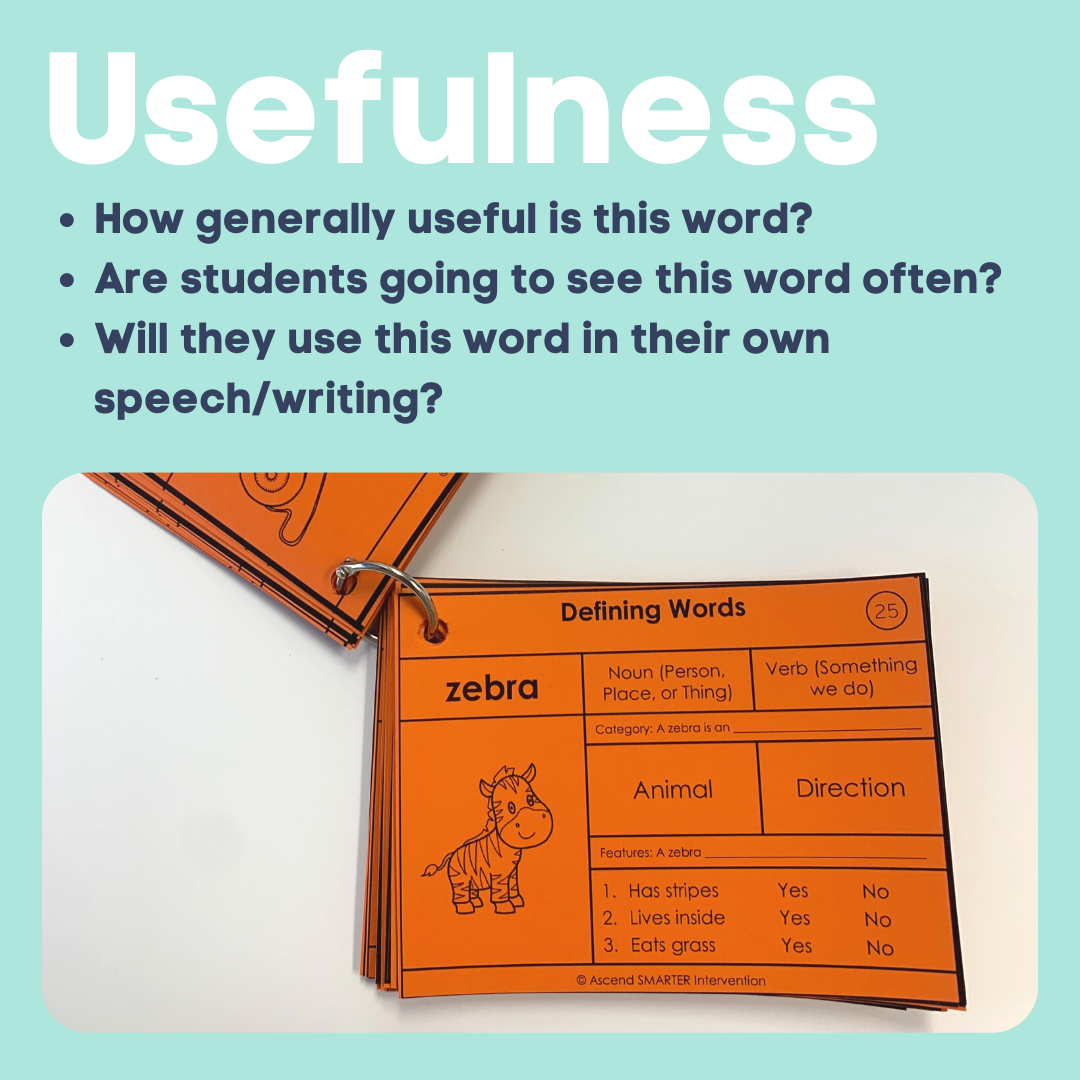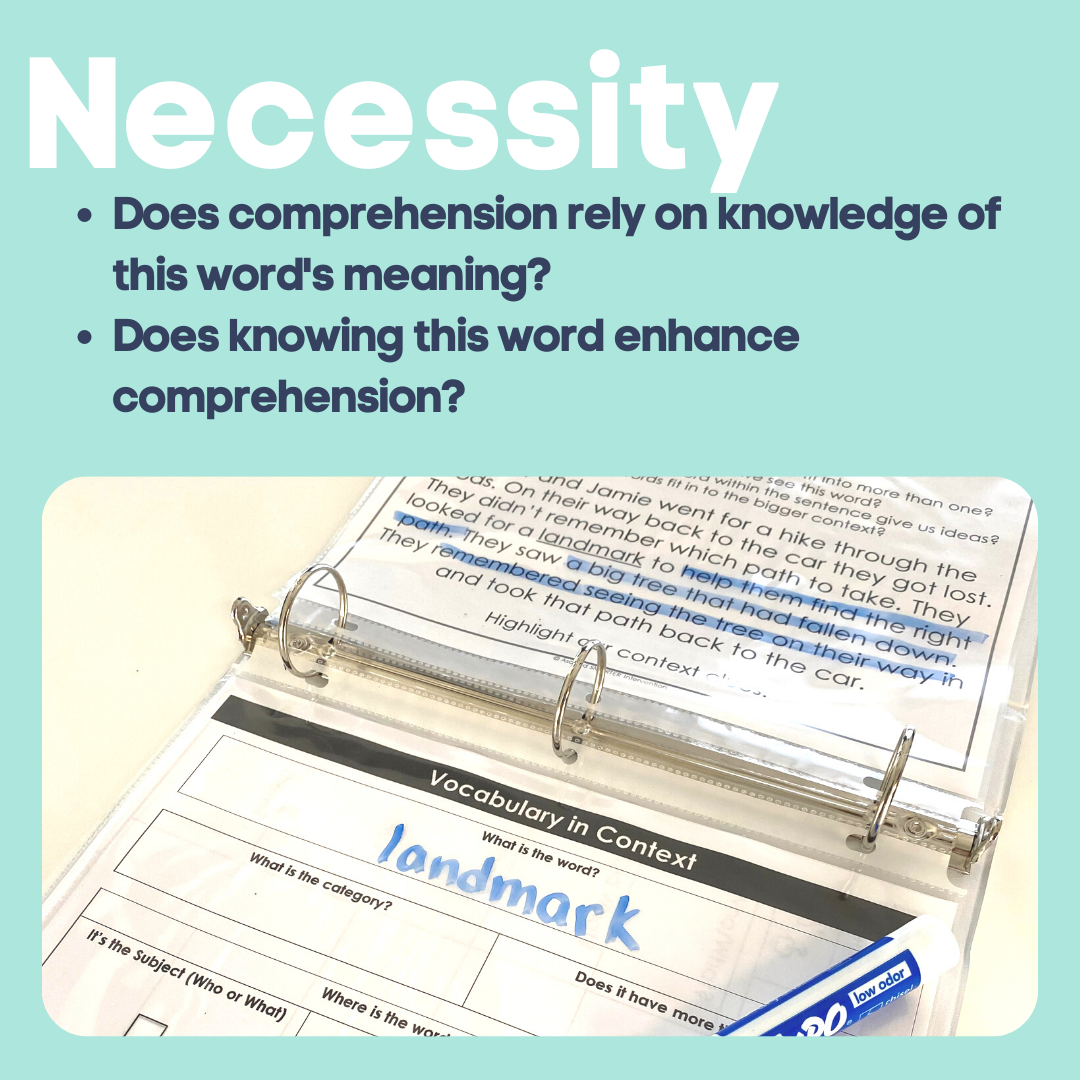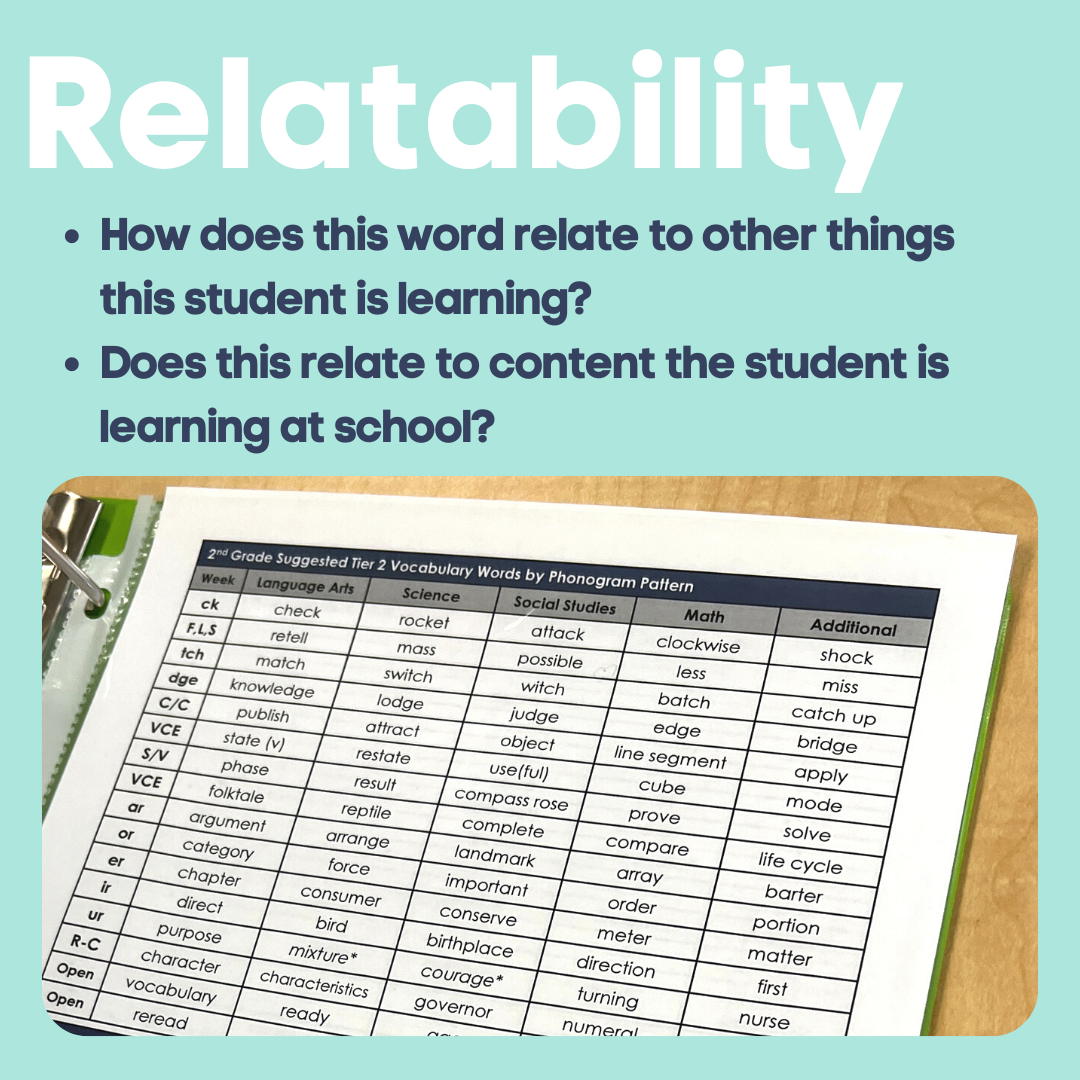How to Pick Vocabulary Words for Your Literacy Lessons
Raise your hand if vocabulary instruction has ever felt a little overwhelming. (*Immediately raises our own hands*)
We're not gonna lie - vocabulary used to SCARE us. How do you teach it? What words do you pick? How do you make it feel cohesive in your lessons?
All of these questions would run through our heads and ultimately leave our instruction lacking.
That is until we cracked the code and found ways to incorporate vocabulary cohesively into our lessons.
The first step was figuring out that looking up definitions and memorizing them wasn't effective for long-term retention. Now, we use a vocabulary framework that revolutionized our approach to vocabulary instruction. You can read about that >>here.<<
Then, we had to answer the question…
How do you pick vocabulary words?
In our lessons, we have two approaches to vocabulary words.
1. Words that come up in our lesson that students don't know
2. Pre-determined word lists
Let's start with the words students don't know.
In our lessons, students read words, sentences, and passages. Often, this means that they come across words they do not know. Our goal is to teach them how to pinpoint which word(s) are keeping them from understanding what they are reading.
Let's say they read, "The yellow bungalow was on the south side of town." If a child doesn't know what a bungalow is, then they are going to have a hard time comprehending this sentence.
To develop their metacognitive skills (so that they can recognize whether or not they understood the sentence) we'll ask them if they have a picture in their head that they could draw. This helps them visualize what they read and supports their comprehension. If they say "no," we will ask if there is a word that is blocking them from creating a mental picture. The ability to visualize what we are hearing and reading supports comprehension, so this is a great way to teach students to self-monitor.
Once they recognize which word left them stuck, we will use a rating system to determine which word they need to define.
This rating system is -
4. I know this word. I can provide a full definition with a category, function, synonym, and antonym/shade of meaning (otherwise known as our vocab framework).
3. I am familiar with this word. I can use it in a sentence and/or can provide a partial definition.
2. I have heard this word. I have heard someone else use this word but can't provide more than one part of the vocabulary framework.
1. This might as well be a nonsense word. I have never heard this word before and cannot provide any parts of the vocabulary framework.
This allows students to build their metacognitive skills and recognize what words they're getting stuck on. Sometimes, we can use context to help us define the word. For example, in the sentence, "The yellow bungalow was on the south side of town," the word bungalow is a part of our subject (the who/what) which tells us it is a noun. Depending on the next sentence in the passage, we may get more context to help us define the word like "the family lived in it for twelve years." which indicates it is some sort of building/home.
Other times, we need to look up a definition. We highly suggest using images to help students learn what the word means. The important part when looking up a definition is that students are able to fill out the >>vocab framework<< in their own words. It is going to be much more effective for them to come up with a category, function, synonym, and antonym that fits into their own knowledge than memorize a definition.
If we are creating vocabulary lists to teach in our lessons, we start by considering the different levels of vocabulary.
Tier 1 vocabulary includes words that students hear and use every day. Picture the conversations they have with their parents or their friends - this is tier 1 vocabulary.
Tier 2 vocabulary words include those that students are going to see often in school. These apply to the different content areas and may be used in class or seen in textbooks. Students may not use these words in casual conversations but need to understand them in order to comprehend their schoolwork. Some examples would be things like mean (as in the average), traits, matter (science-definition), and so on.
Tier 3 vocabulary words are content-specific and academic in nature. Unlike tier 2 words which are considered high-frequency, tier 3 vocabulary words are far less common. These might include things like cosine, alkaline, and so on.
We generally target Tier 2 words with our students. If we have students who need more significant vocabulary support (like our ELA students or those with speech & language difficulties), we will also add tier 1 vocabulary into our lessons. As Tier 3 words are very content-specific, we usually skip those unless students need to know them to comprehend the passage we are reading that day.
What does vocabulary instruction look like in the classroom vs. an intervention setting?
If you are in the classroom, take a look at your different units and determine where it makes sense to instruct Tier 2 words. We pull our words from Marzano's lists.
In a literacy intervention setting, since we aren't digging as deeply into other content areas (like science or math), we use Marzano's lists and then align words with our phonograms to create vocabulary lists that feel cohesive with our phonics instruction. We try to pull words from different content areas to help students develop a broader vocabulary base.
When working on the AR pattern, we pull tier 2 vocabulary words from different content areas that align with our phonogram.
For example -
Language arts - argument
Science - arrange
Social Studies - landmark
Math - array
Then, we run through the vocabulary framework for each of the words.
An argument is a noun (thing) that means a heated disagreement. It's like a fight but it usually only involves words.
Arrange is something we do that means to put things into a particular order. It's like to organize but not like to jumble.
A landmark is a thing that helps us to determine our location. It's like a sign but it doesn't need to include words.
An array is a thing used in math that displays information. It's like an arrangement but it is laid out to be viewed easily.
This has worked for our students, but we encourage you to pull the vocabulary words that are going to make the most sense for your students! While there are suggested “grade-level” vocabulary lists, picking vocabulary words isn’t a perfect science. Instead, we should consider what words are necessary for students to comprehend the material they are working on.
In short - we use words that already exist within our lesson for the bulk of our vocabulary instruction so that we can teach students to recognize where vocabulary is impacting their comprehension. Then, we add tier 2 words in to help build their vocabulary knowledge across different content areas.
For more information about effective literacy instruction, check out our Science of Reading Blueprint!
For additional reading, we recommend these books/articles.
Beck, I. L., McKeown, M. G., & Kucan, L. (2005). Choosing words to teach. Teaching and learning vocabulary: Bringing research to practice, 209-222.
Bromley, K. (2007). Nine things every teacher should know about words and vocabulary instruction. Journal of adolescent & adult literacy, 50(7), 528-537.
Gray, S., & Yang, H. C. (2015). Selecting vocabulary words to teach. Perspectives on Language Learning and Education, 22(4), 123-130.


